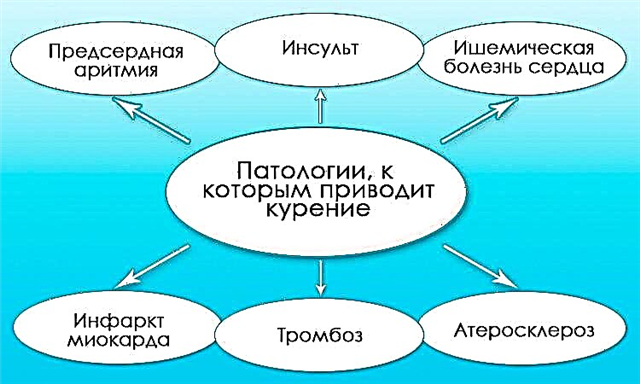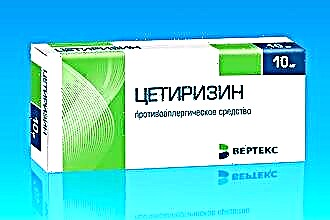The onset of fever is a universal variant of the body's defense reaction. It is aimed at activating the mechanisms of the immune system, preventing reproduction and destruction of the infectious agent, weakening its pathogenic properties. Otitis media is an infectious and inflammatory process, and elevated body temperature in this disease is a common symptom. It cannot be called unconditionally expected, since not all forms of otitis media are accompanied by fever. Nevertheless, the registration of body temperature is of great importance for the differential diagnosis of ear lesions. By how many days the temperature lasts with otitis media, one can judge the severity of the patient's condition, assume probable outcomes of the disease.
Fever with otitis media

Temperature in otitis media is one of the main manifestations of intoxication syndrome, which also includes weakness, headache, a feeling of weakness, and general malaise. The pathogenetic basis for the development of intoxication is absorption into the blood from the focus of inflammation:
- toxins;
- infectious agents;
- products of the inflammatory reaction.
Intoxication syndrome is most pronounced with a purulent form of inflammation. At the same time, otitis media and temperature are concepts that are inextricably linked with each other. Since fever has a protective function, it is worth worrying about its appearance only in certain cases (for example, with hyperthermic syndrome).
Can otitis media be present without fever? Variants of the course of inflammatory ear diseases without the presence of fever in the clinical picture do exist. Among them are otomycosis (fungal infection of the structures of the outer ear), eczema of the external auditory canal. Fever may not be present with a diffuse external form of the disease and even with an atypical course of otitis media.
An increase in body temperature values depends on the etiology, form, and severity of the course of the disease. Fever is optional, but in some cases it can be extremely helpful in differential diagnosis.
Detection of fever before suppuration begins is important to confirm the diagnosis of otitis media.
Otitis externa and fever
 Outer ear inflammation cannot be regarded solely as otitis media without fever. A febrile reaction in this disease is observed very often and can become an indication for drug correction with a significant deterioration in the patient's condition.
Outer ear inflammation cannot be regarded solely as otitis media without fever. A febrile reaction in this disease is observed very often and can become an indication for drug correction with a significant deterioration in the patient's condition.
Limited otitis externa is characterized by the appearance in the external auditory canal of a purulent formation - a boil. In this case, the body temperature can be subfebrile (up to 37.9 ° C), febrile (more than 38 ° C). The temperature reaction is much more pronounced in children.
With a diffuse external form, body temperature indicators most often remain within the subfebrile range. In this case, even if with otitis media there is a temperature, the general condition of the patient is moderately impaired. Complaints about fever cannot be called predominant over other manifestations of concern to the patient.
Fever with otitis media
Otitis media, the temperature at which is considered one of the key manifestations, is a purulent form of otitis media. As mentioned earlier, intoxication syndrome is of great importance for differential diagnosis. Fever combined with severe ear pain suggests that a patient has otitis media.
How long does the temperature last for otitis media? Fever is a persistent symptom of the pre-perforative stage of the disease, which lasts until the moment of spontaneous perforation of the tympanic membrane (or tympanopuncture, paracentesis performed by an otolaryngologist). The duration of the named stage of the flow can be from several hours to several days.
You should know that with the onset of suppuration, the temperature with otitis media decreases to normal values.
Is there a fever in children with otitis media? Inflammation of the middle ear in childhood is not easily tolerated. The younger the child, the worse his condition. Since the tympanic membrane in infants is thicker than in adults, a feature of the course can be called the difficulty of perforation and the release of pus. At the same time, there is no doubt what temperature is expected in otitis media - fever reaches 39-40 ° C, often remains resistant to the use of symptomatic antipyretic drugs.
Temperature and complications of otitis media
The fears associated with the disease are explained not only by the severity of clinical manifestations, but also by the high probability of serious complications. The dynamics of changes in temperature indicators is one of the simplest and most affordable ways to determine how effective antibiotic therapy is, whether to expect deterioration or improvement in the patient's condition. The disappearance of fever with the cessation of otorrhea is a favorable prognostic sign, while a repeated increase in body temperature after a short-term improvement suggests the need to suspect complications.
whether to expect deterioration or improvement in the patient's condition. The disappearance of fever with the cessation of otorrhea is a favorable prognostic sign, while a repeated increase in body temperature after a short-term improvement suggests the need to suspect complications.
High fever with otitis media is alarming if:
- is not eliminated with antipyretic drugs;
- grows rapidly against the background of an intolerable headache, photophobia;
- accompanied by nausea, vomiting;
- accompanied by abdominal pain, upset stools;
- accompanied by the appearance of a rash on the skin, mucous membranes.
A complication of acute purulent inflammation of the middle ear can be mastoiditis - damage to the bone tissue of the mastoid process with the development of osteomyelitis. This is a secondary disease, the occurrence of which is explained by irrational therapy, a decrease in immune reactivity. How many days does the temperature last with otitis media complicated by mastoiditis? In this case, the patient's condition is temporarily normalized, signs of recovery persist for several weeks. Then fever reappears, pain in the ear, and the discharge of pus resumes.
Among the complications of a purulent process in the middle ear, otogenic meningitis and otogenic sepsis are also considered. The temperature rises to 39–40 ° C and above. In this case, sepsis is characterized by hectic fever, accompanied by severe chills.
Fever management
Has otitis media developed and the temperature persists? What to do in this case, every patient needs to know. The mainstay of treatment is antibiotic therapy, which can be:
- Local (topical).
- Systemic.
Topical therapy is used in the treatment of the external form. Fever in this case requires urgent care only at febrile values, when the patient complains of severe headache and weakness, his feet and palms become cold to the touch, pale.
 With purulent otitis media, the systemic use of antibiotics (tableted, injectable forms) is indicated. A decrease in body temperature may be required with a sharp deterioration in the condition, an increase in fever values up to 38.5 ° C or more.
With purulent otitis media, the systemic use of antibiotics (tableted, injectable forms) is indicated. A decrease in body temperature may be required with a sharp deterioration in the condition, an increase in fever values up to 38.5 ° C or more.
Subfebrile fever with a satisfactory general condition of the patient is not stopped by drugs.
In all the situations described above, antipyretic drugs (antipyretics) are used - paracetamol or ibuprofen. They are available in various dosage forms (tablets, syrups, injections), which allows you to choose the optimal method of administration and quickly bring down the temperature. General rules are also relevant:
- a sufficient amount of liquid (tea, compote, mineral water - not cold and not hot);
- bed rest, limitation of physical activity.
In addition to the antipyretic effect, paracetamol and ibuprofen have analgesic properties, which makes it possible to combine antipyretic and analgesic effects. If, some time after taking the drug, the temperature remains at the same level or rises, it is necessary to assess the patient's condition.
Lethargy, drowsiness, lethargy, severe headache, vomiting, "marbling" of the skin of the extremities is an indication for emergency medical care.
How many days does the temperature in otitis persist after the start of antibiotic therapy? The temperature curve values help determine if the selected drug is effective. Tracking the change in indicators within 24–48 hours is necessary to make an informed decision on the continuation of therapy or correction of its composition, dosage of drugs. Improvement of the condition with proper therapy is expected already in the first day of treatment, however, the normalization of temperature values is possible only after stopping the infectious-inflammatory process, which takes at least several days.



